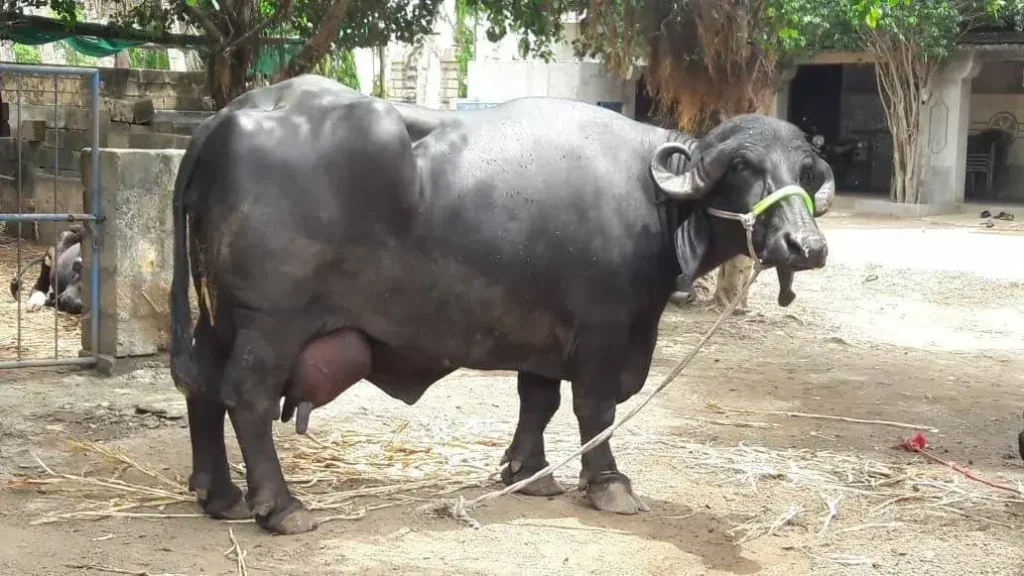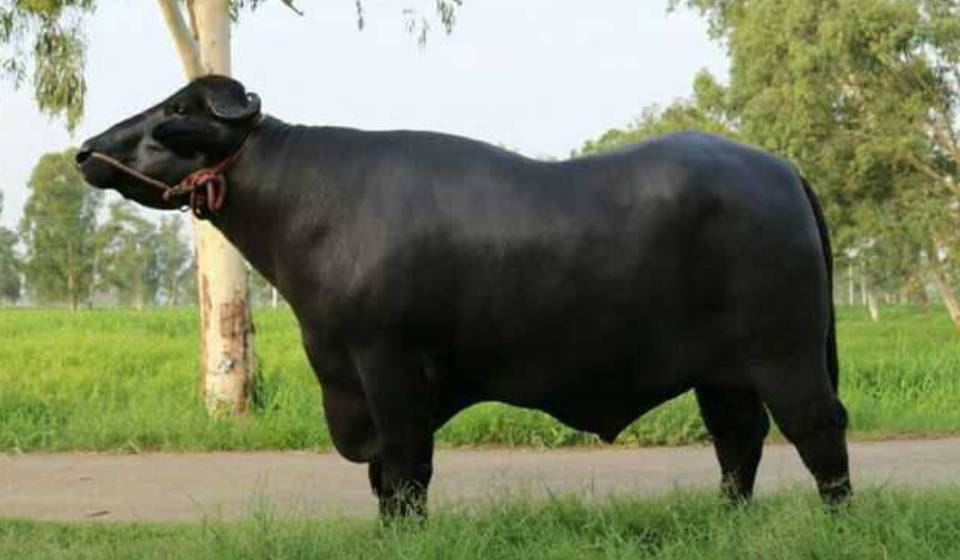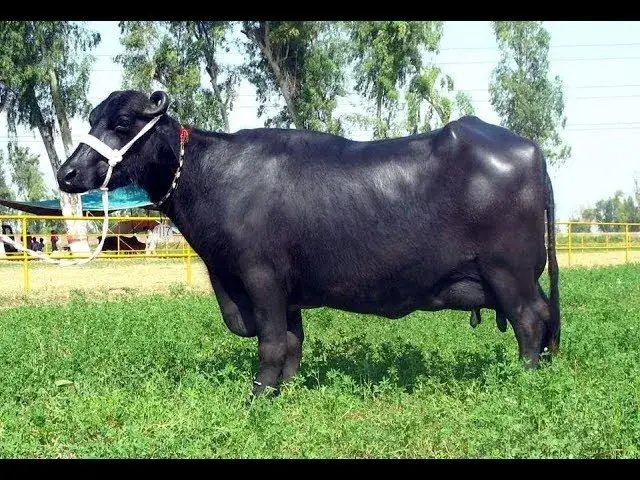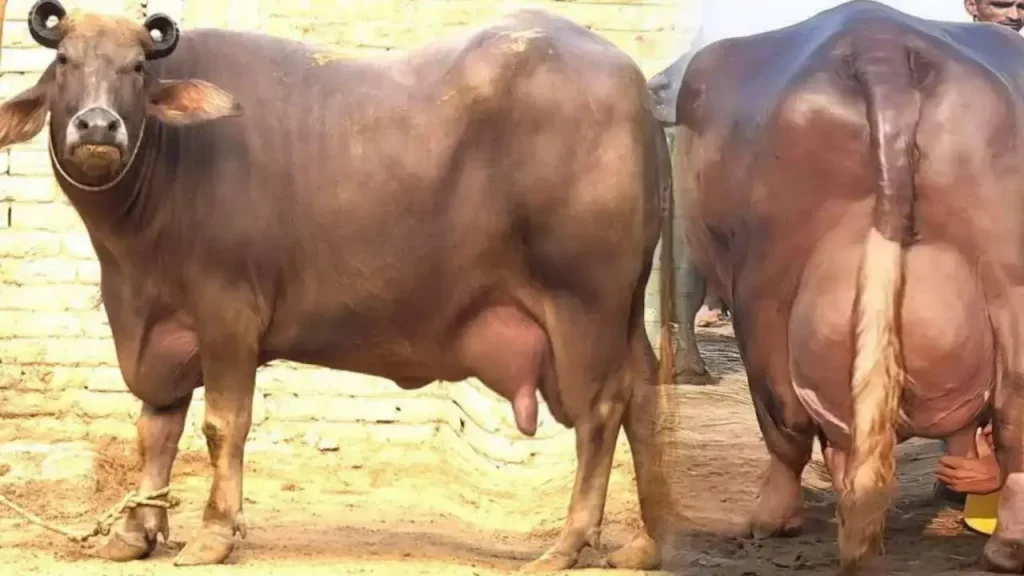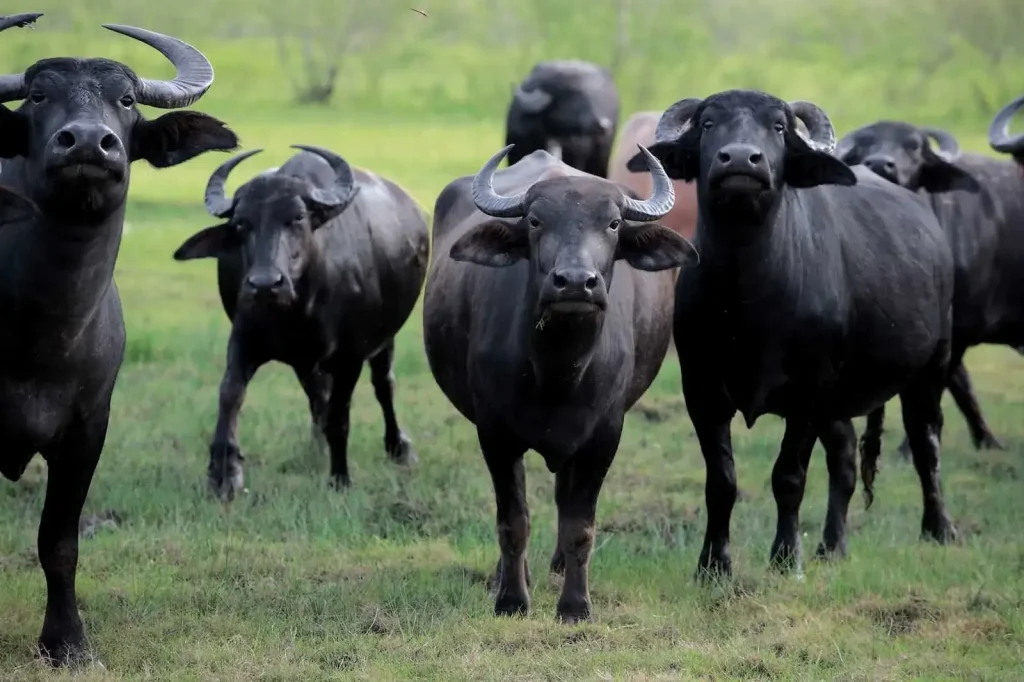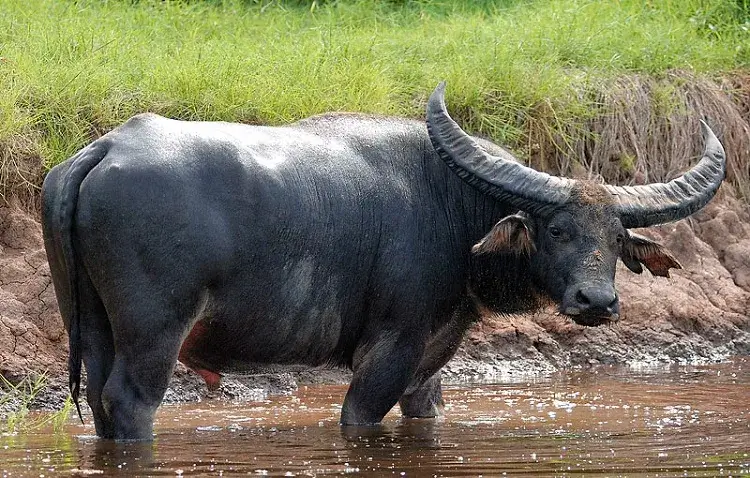🐃 Jafarabadi Buffalo – India’s Mighty Milk Giant
🌟 Introduction to the Jafarabadi Buffalo
The Jafarabadi Buffalo is one of India’s most powerful and majestic water buffalo breeds. Known for its large frame, unique head shape, and high milk yield, this breed is a favorite among dairy farmers, especially in Gujarat. Its strength, adaptability, and productivity make it a valuable asset in both small-scale and commercial dairy operations.
📍 Origin and Heritage
This remarkable breed hails from the Saurashtra region in Gujarat, particularly around the town of Jafarabad in the Amreli district. Experts believe the Jafarabadi buffalo is a cross between the African Cape buffalo and the native Indian water buffalo. The result is a strong, heat-tolerant breed well-suited to India’s challenging climate.
🧬 Distinct Physical Characteristics
The Jafarabadi buffalo has a commanding presence and can be easily identified by its:
- 🖤 Deep black or dark brown coat
- 🐮 Large, muscular body with a deep chest
- 🔁 Broad head with a wide forehead
- 🌀 Drooping, curved horns that point backward
- 📏 Shoulder height up to 140 cm
- ⚖️ Adult bulls weigh 600–800 kg; cows weigh 500–600 kg
🥛 Milk Production and Dairy Performance
This breed is highly prized for its milk:
- 🥤 Daily milk yield ranges between 10–14 liters
- 🏆 Top-quality individuals can produce over 18 liters/day
- 🧈 High-fat content: 7% to 8.5%
- 📆 Lactation lasts around 250 to 300 days
Their rich milk is ideal for making ghee, paneer, and other dairy products loved across India.
🌞 Adaptability and Climate Resistance
The Jafarabadi buffalo thrives in hot, tropical environments:
- 🔥 Excellent tolerance to heat and humidity
- 🌿 Performs well in both open grazing and stall-fed systems
- 💧 Needs access to water and mud for cooling, especially in summer
This adaptability makes it ideal for farmers in diverse climates.
🌿 Feeding and Nutritional Requirements
To ensure good health and high milk production, Jafarabadi buffaloes need:
- 🌱 Green fodder: berseem, lucerne, jowar, and maize
- 🌾 Dry fodder: wheat straw, rice husk, and cottonseed cake
- 🧂 Mineral supplements and salt licks to boost milk yield
- 💧 Plenty of clean water and shade during hot months
🩺 Health and Management
Although hardy, proper care enhances their productivity:
- 💉 Regular vaccinations for FMD, HS, and BQ
- 🧼 Clean housing with good ventilation and drainage
- 🐛 Deworming every 3–6 months based on the management system
🐣 Reproduction and Breeding
With good care, Jafarabadi buffaloes show strong reproductive traits:
- 📅 First calving age: 36 to 42 months
- 📈 Calving interval: 15 to 18 months
- 👶 Calves are strong and quickly adjust to the environment
They’re also used to enhance local buffalo breeds through selective crossbreeding.
💰 Economic Importance
This breed plays a key role in rural livelihoods and dairy industries:
- 👨🌾 High milk output benefits both small farmers and large dairy farms
- 🏭 Ideal for medium and commercial-scale milk production
- 🇮🇳 Widely considered a national asset for dairy growth
🌐 Global Demand and Export
Thanks to its resilience and productivity, the Jafarabadi buffalo is also in demand globally:
- 🌍 Exported to countries like Brazil, the Middle East, and Africa
- 📦 Shipped as live animals and for breeding programs
- 💲 Price ranges from $1000 to USD 3000, based on quality
🎖 Cultural Significance
In Gujarat, this buffalo is more than livestock—it’s a symbol of pride:
- 🎉 Showcased in livestock fairs and rural festivals
- 🏆 Prize buffaloes often become elite breeding bulls
- 📿 Associated with wealth and prosperity in many communities
🧬 Genetic Conservation
Efforts are underway to preserve this iconic breed:
- 🔬 Government and NGOs maintain semen banks and records
- 🧪 Artificial insemination ensures genetic diversity
- 🏞 Community farms in Gujarat work to protect pure lines
❓ Frequently Asked Questions
Q1: What is the average milk yield of a Jafarabadi buffalo?
A: Typically, 10–14 liters per day, with elite individuals producing over 18 liters daily.
Q2: What makes the Jafarabadi buffalo unique?
A: Its massive size, broad forehead, curved horns, and high-fat milk make it stand out among Indian breeds.
Q3: Where is the Jafarabadi buffalo commonly found?
A: It is mainly found in Gujarat, especially in Junagadh, Amreli, and Bhavnagar districts.
Q4: Is the Jafarabadi buffalo good for commercial dairy farming?
A: Yes! It’s perfect for both small-scale and commercial dairy setups due to its high yield and strong constitution.
Q5: Can Jafarabadi buffalo adapt to climates outside Gujarat?
A: Absolutely. Their heat tolerance allows them to thrive in various climates across India, Pakistan, and even abroad.
✅ Conclusion
The Jafarabadi Buffalo is truly a dairy powerhouse. With its large build, rich milk, and cultural importance, it plays a crucial role in India’s rural economy. Whether you’re a traditional farmer or a dairy entrepreneur, investing in this breed can lead to long-term productivity and prosperity.
Nili-Ravi Buffalo
🐃 Jafarabadi Buffalo for Sale
The Jafarabadi Buffalo is one of the heaviest and most powerful buffalo breeds, originally from the Gujarat region of India. Known for its high milk yield and strong build, this breed is widely admired by dairy farmers. If you’re looking to buy or adopt a Jafarabadi Buffalo, explore the listings below based on your country.
- Jafarabadi Buffalo for Sale in Australia
- Jafarabadi Buffalo for Sale in Canada
- Jafarabadi Buffalo for Sale in Pakistan
- Jafarabadi Buffalo for Sale in India
- Jafarabadi Buffalo for Sale in Indonesia
- Jafarabadi Buffalo for Sale in United Arab Emirates
- Jafarabadi Buffalo for Sale in Philippines
- Jafarabadi Buffalo for Sale in Nigeria
- Jafarabadi Buffalo for Sale in Malaysia
- Jafarabadi Buffalo for Sale in United States
- Jafarabadi Buffalo for Sale in United Kingdom
